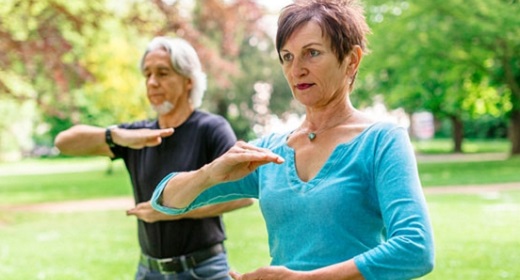by Matthew Solan: Research says people with a positive outlook live longer. But what if you’re not inherently optimistic? Can you change your outlook on life?
You know the type: some people manage to remain upbeat even during the most trying times. You probably think “How do they do it?” But a better question to ask is “Can I do it, too?”
Science continues to find that people with an optimistic outlook enjoy healthier and longer lives. A study published Sept. 10, 2019, in the journal PNAS involving more than 70,000 people found that those who rated themselves as having high optimism were more likely to live to age 85 or older compared with less optimistic individuals.
The power of optimism is not just having a sunny disposition, but applying this mindset to make positive change, according to Laura Kubzansky, co-director of the Kum Sheung Center for Health and Happiness at the Harvard T.H. Chan School of Public Health.
“Optimism is more goal-oriented,” she says. “Optimistic people generally have the perspective that with the right approach and right action they can solve problems and improve the situation.”
Different mindset
It’s not clear exactly how optimism affects health. Investigators have considered both biological and behavioral mechanisms. For example, optimistic people tend to have lower levels of inflammation and healthier cholesterol levels compared with less optimistic people. But they also are more likely to engage in healthy behaviors like staying active, eating right, not smoking, and not abusing alcohol.
“We still are not sure if this mindset directly impacts biological functioning toward healthier profiles, or if it primarily makes people embrace healthy habits, or if it’s a combination of both,” says Kubzansky.
But this brings up the central question about health and optimism: can you become more optimistic?
Factors at play
Kubzansky says that optimism is approximately 25% to 30% heritable. “But this means there is room for other factors to influence optimism quite substantially.”
Researchers have found that certain factors can influence one’s optimism, such as income, education, geography, and social status. “So changing people’s environments and social structural factors may be one way to change optimism levels,” says Kubzansky.
Still, she believes people can learn to be more optimistic without such changes. “It’s not always easy, and it takes dedication, but it’s possible for people to change their mindset.”
Here are four practices she suggests that could help you build more optimism.
Look for opportunities. When difficult events happen, turn your focus toward a more positive alternative. For example, if you are stuck waiting for an appointment, use this unexpected free time to call a friend or read a book. If an injury or sickness has derailed your usual workouts, focus on what you can do, like gentle stretching or using resistance bands. “These substitute activities can make you feel more positive and remind you that difficult circumstances will not necessarily continue, and you can overcome barriers to get there,” says Kubzansky.
Focus on your strengths. Here is an exercise from the Greater Good Science Center at the University of California, Berkeley. Reflect on your personal strengths, like creativity, perseverance, kindness, curiosity. Choose one and plan how to use it today. For example, for perseverance, make a list of tasks you have found challenging recently, then try to tackle each one. If you choose curiosity, attempt an activity you’ve never tried before. Repeat this process every day for a week. You may use the same personal strength across multiple days, or try using a different one each day. Another way to assess your character strengths is to take the free Values in Action (VIA) Survey at www.viacharacter.org/survey/account/register.
Practice gratitude. Optimists often are thankful for what they have and share it with others. Keep a gratitude journal where you list the many gifts and blessings for which you are thankful, like your current health, a kind gesture you received, a great meal you enjoyed.
Create a mental image of your best possible self. Where do you see yourself in five or 10 years? This exercise helps you address three essential questions:
- What are you doing now?
- What is important to you?
- What do you care about and why?
The answers can help you focus on new goals and areas of improvement you’ve always wanted to pursue, but couldn’t because of other life obligations, like work and raising kids.
“This can help turn your attention toward something stimulating and exciting, which can increase your sense of great possibilities and a more positive future,” says Kubzansky.










































